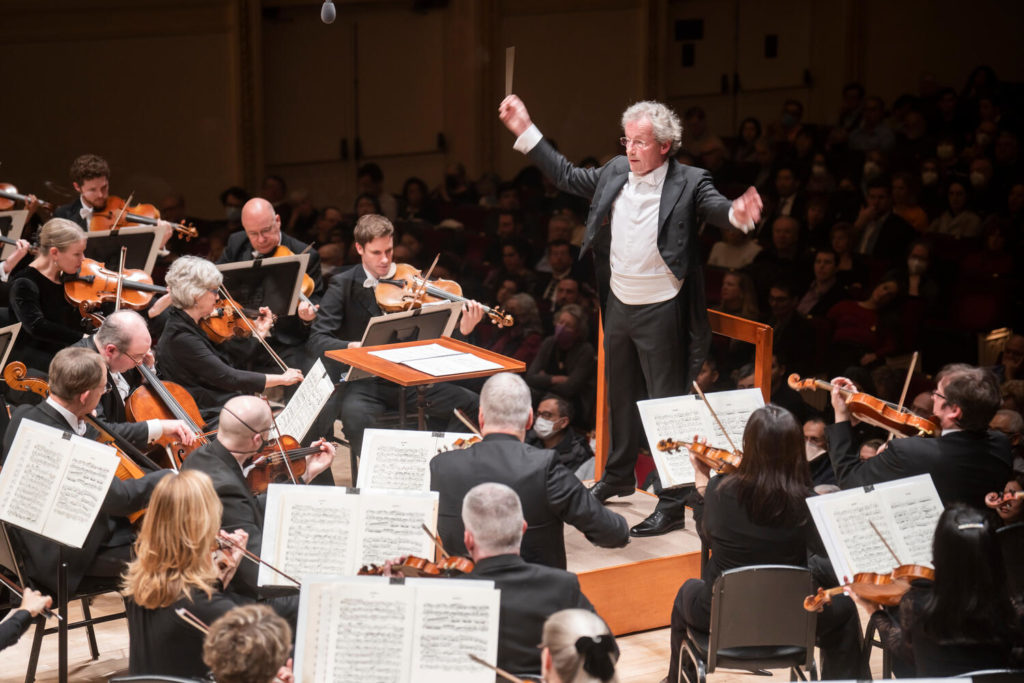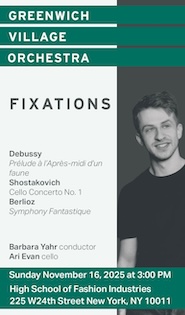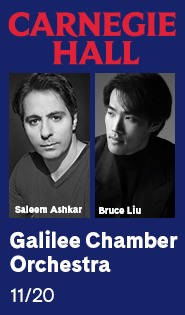Welser-Möst recombines Berg and Schubert in Cleveland Orchestra’s Carnegie Hall stop

Despite a complement of musicians that looked large enough to produce Mahlerian storms, no passions were torn to tatters in the Cleveland Orchestra’s exploration of Berg and Schubert at Carnegie Hall on Wednesday night. Instead, the orchestra’s longtime skipper, Franz Welser-Möst, gave a seminar in the delicate maneuvering of a very large vessel.
One would think, in his 21st year as music director of the fabled ensemble, a raised eyebrow would be enough to get any result he wanted. Yet Welser-Möst still presented an arresting figure on the podium, centered and poised, with a rich vocabulary of gestures that at times seemed like a guide to the listener as much as to his players.
He used it all in the service of dense, subtle music (movements from Berg’s Lyric Suite), subtle readings of familiar music (Schubert’s Symphony No. 8), and a notably intimate approach to Schubert’s great, late Mass No. 6 in E-flat major, D. 950.
The program began experimentally by alternating movements of two famously incomplete Berg and Schubert works in order to make — well, a point. In advance comments, Welser-Möst proposed Berg as Schubert’s legitimate Viennese heir, and to prove it, the orchestra performed three Berg pieces — the Lyric Suite movements, originally for string quartet, arranged for string orchestra — interleaved with the two movements of Schubert’s “Unfinished” Symphony. So, Berg-Schubert-Berg-Schubert-Berg.
Apparently to help the comparison along, Welser-Möst somewhat Berg-ified the symphony’s bold outlines. The first movement’s agitated opening bars were almost inaudible, as was its famous cello theme, drowned out by two accompanying flutes. A listener who didn’t already know the piece might wonder what was going on.
One couldn’t help thinking there were better ways to make the connection between these two composers than trying to fit the square peg of Schubert’s assault on Beethoven’s symphonic forms into the round hole of Berg’s encrypted letters to his lover. On their individual merits, however, the movements offered much to enjoy. In Berg’s Andante amoroso, Welser-Möst kept the lights down low, musically speaking, as he wove together the sinuous strands of string tone, capturing the fleeting moods, playful or reflective, with a snatch of a waltz for good measure.
Once they came out of the shadows, the themes of Schubert’s Allegro moderato enjoyed a vigorous development and a strong minor-key recapitulation, despite a tendency to rush the cello theme and its gently bobbing accompaniment.
Berg’s Allegro misterioso scampered softly, but the muted strings surged with glossy tone in the middle Trio estatico section.
Schubert’s Andante con moto moved right along as indicated, Welser-Möst tautly shaping the dialogue between strings and winds. Toward the end, individual players shone in expressive wind solos.
Berg himself seemed to come out of the shadows in his robustly expressive Adagio appassionato, as string sections called out to each other or joined in slashing phrases. Deep waves rose and flicked foam in the air, until all subsided into a disconsolate solo for concertmaster David Radzynski’s muted violin.
The enigmatic character of this Berg-Schubert mixture seemed to carry over into the ultra-pianissimo opening of Schubert’s Mass, the Cleveland Orchestra Chorus pleading for mercy in the Kyrie as if struck dumb with awe. Eventually, with well-shaped orchestral support, the conductor coaxed them out, their sound a rich cushion behind rocking strings and a gleam of winds.
Inevitably, the singers’ face masks took a toll on articulation and diction. But their efforts to overcome this handicap often succeeded, making intelligible such lines as the first “Gloria in excelsis Deo” and the fugue subject “Cum Sancto Spiritu.”
Conductor and musicians both highlighted Schubert’s many innovations in this Gloria movement: the grazioso lilt of the “Gratias” section, with its stark contrasts of loud and soft; the solo trombone’s forte intervention at “Domine Deus”; and the extraordinary modulations of the chorus, pianissimo and exquisitely tuned, in the “Quoniam.” The latter, like many other choral moments on Wednesday, was a testament to thorough preparation by chorus director Lisa Wong.
Unusually for a Credo, pianissimo prevailed for much of that movement as well; the necessary message of affirmation was conveyed by the music’s steady forward motion. The solo trio of soprano Joélle Harvey and tenors Julian Prégardien and Martin Mitterrutzner sounded melodious and well matched in the mystical “Et incarnatus est.” Later, as the text invoked “the Holy Spirit,” a solo oboe melody rose above the scene. The closing fugato on “et vitam venturi saeculi” had plenty of energy, but could have used some Handelian lift.
Welser-Möst expertly managed the large dynamic swells and unpredictable modulations of the Sanctus. A solo quartet consisting of Harvey, Prégardien mezzo-soprano Daryl Freedman and bass-baritone Dashon Burton modestly led the Benedictus with fine vocal blend and fluid harmonies.
The initial anguish of the Agnus Dei, with its persistent brass intrusions, contrasted markedly with the passages on “Dona nobis pacem” — an ethereal pianissimo at first, but returning as a resonant, expressive appeal from suffering humanity to heaven.
The endlessly innovative yet unassuming work closed quietly, leaving one to reflect on a message of peace that resonated as strongly in 2023 as it did in 1828.
Carnegie Hall presents the Philadelphia Orchestra conducted by Yannick Nézet-Séguin, with pianist Yuja Wang, in the four piano concertos and Rhapsody on a Theme of Paganini by Rachmaninoff, 4 p.m. Sat. Jan. 28. carnegiehall.org



